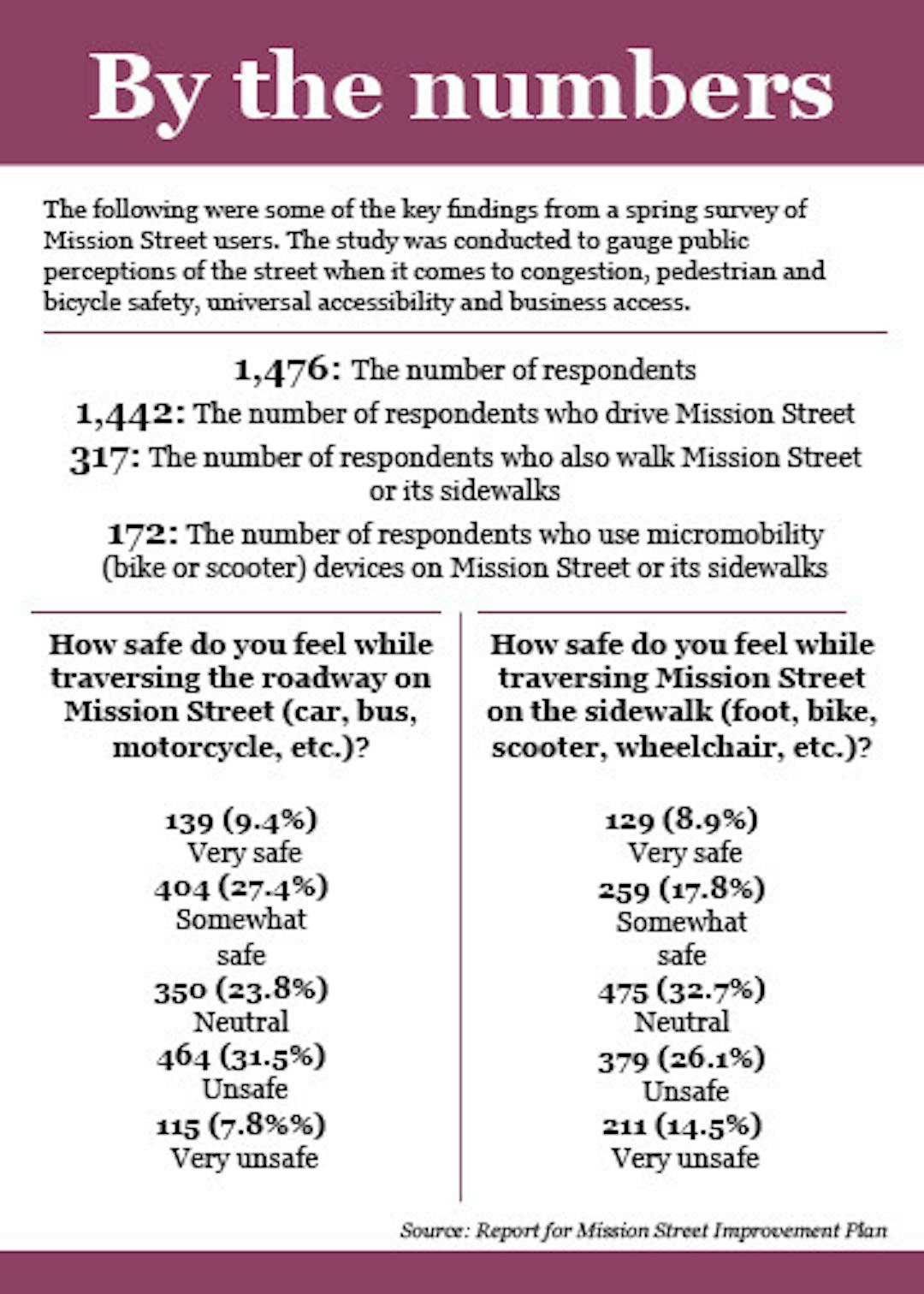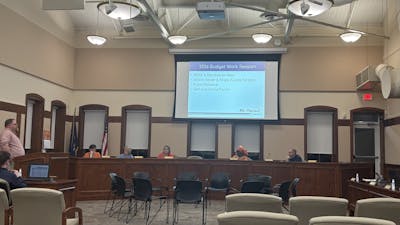Safety, access top Mission Street survey

Mount Pleasant commuters overwhelmingly said safety is their top concern on Mission Street, a survey present this week to the City Commission found.
Nearly 1,500 people participated as part of ongoing improvement planning for the north-south corridor. Of those, 71 percent were Mount Pleasant residents and 14 percent students at Central Michigan University.
Nearly all the respondents reported driving Mission Street as a primary mode of transportation. Some 21.5 percent also reported walking the roadway, 11.7 percent said they would ride a bike or scooter and fewer than 5 percent each said they also ride motorcycles or take the bus.
Regardless of how they traversed the 2.8-mile stretch from Blue Grass Road to Corporate Drive, the consensus was clear.
“The overall theme from our analysis is safety is a top concern,” said Suzanne Schulz, urban design and planning practice leader for Progressive Companies.
Her architecture and design firm took the helm on a multi-month review of the corridor starting in March of this year. The goal was to gauge public perceptions of the street when it comes to congestion, pedestrian and bicycle safety, universal accessibility and business access.
Progressive will next take the feedback and begin the process of developing a redesign plan that not only serves the businesses along the highway, but that addresses users’ woes as well.
Of the respondents, 39.3 percent said they feel unsafe when driving Mission Street, compared with 36.8 percent who thought it OK. By comparison, 40.6 percent of respondents don’t feel safe using Mission Street sidewalks, whereas 26.7 percent do.
Nearly half of respondents (48.6 percent) said they were “very unsatisfied or unsatisfied” getting into or out of destinations along the roadway, compared to the 28.9 percent who felt the ingress and egress made the grade, the survey found.
“Your impressions, or how you feel about a place, is just as important as the actual data,” Schulz said. “Safety clearly rose to the top, as did accessibility (when) thinking about how we do redevelopment along that corridor.”
Historic data supports the respondents’ worries. Between 2018 and 2022, there were 1,045 crashes on Mission between Blue Grass Road and Pickard Street, Schulz’s data showed. Many of those were clustered around the intersection of South Mission and East Broomfield streets.

Only 2 percent of all collisions involved a so-called “vulnerable road user” such as a pedestrian or cyclist, but of those that ended in a severe injury, 22 percent involved a pedestrian and 11 percent a cyclist. In that four-year time period, every pedestrian-involved crash ended up with the walker being injured, Schulz reported.
The upside, though, is that there is room for and interest in improving the roadway. Street lighting (63.1 percent of respondents), enhanced crosswalks (58.8 percent) and a left-turn median (49.8 percent) were all listed as “very important” to the road design.
“If you’re trying to (walk across) Mission Street altogether, you’re dodging traffic,” Schulz told the commission. “Nobody likes to play ‘Frogger’ as you’re trying to get across.”
Currently, about 21,200 cars hit the roadway each day, a significant drop from the 35,000 daily usage at the peak in 2001. Existing city policies have been effective, Schulz said, and there are opportunities for better lighting, easier access, multi-business accessibility and landscaping to make the corridor not just a pass-through but a destination.
The Progressive team will spend the remainder of July and August drafting some conceptual designs for a redeveloped roadway and options for policy changes. The company anticipates coming forward in September for public input and an education event, before beginning the process of drafting a final proposal to serve all stakeholders’ needs.
“There’s a strong desire for improvement, but we have to have that balance between an aspirational vision and current constraints to really move that needle,” Schulz said. “You have the policy tools and opportunities to impact really significant change, but having a phased approach is really important.”






